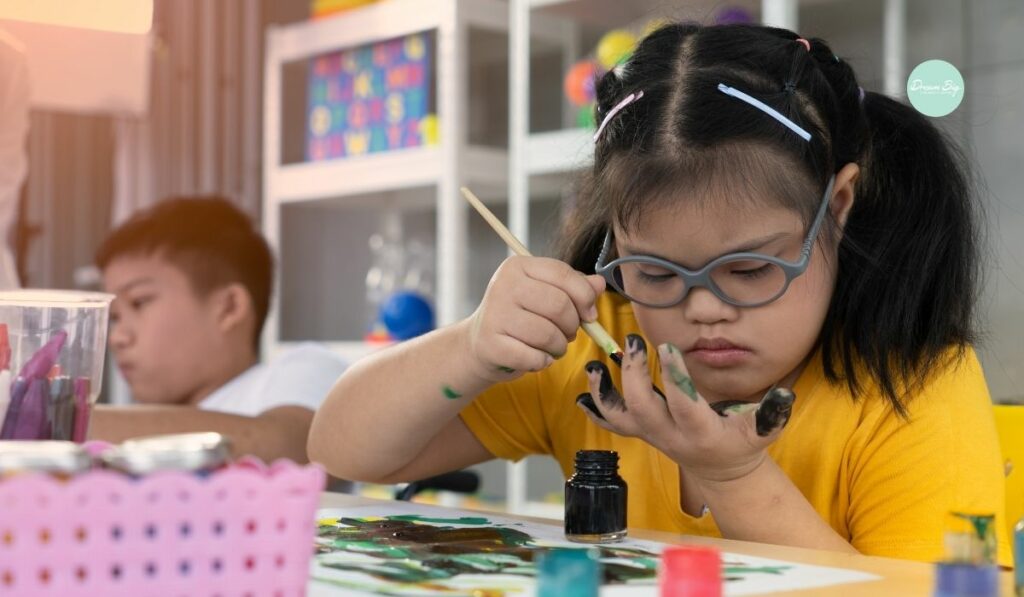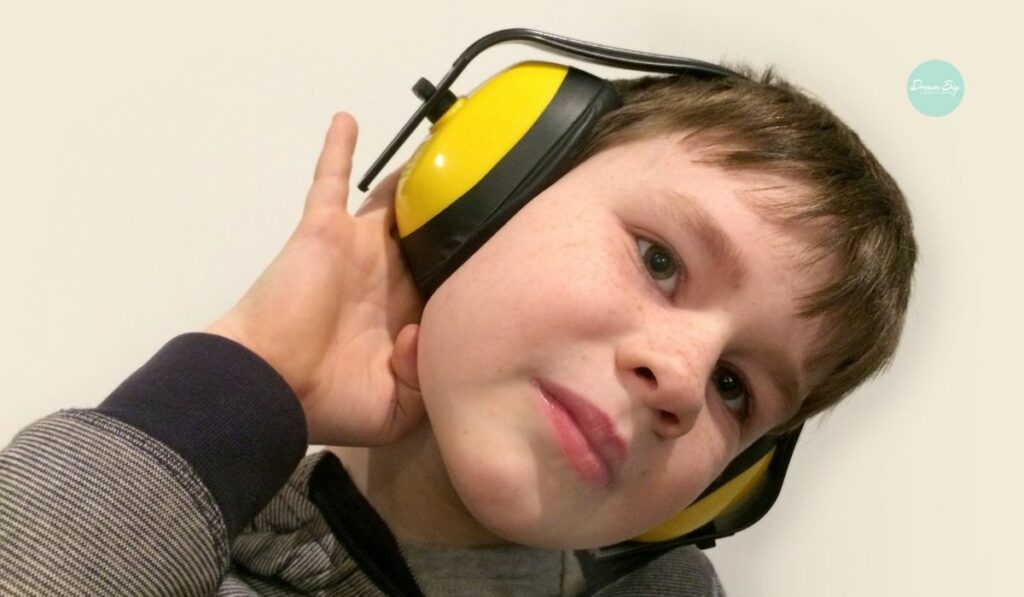Children with autism often possess unique talents and abilities, including creativity and imagination. However, they may require different strategies to nurture these skills effectively. Fostering creativity and imagination in children with autism not only enhances their cognitive development but also enriches their overall well-being. Here are ten creative ways, including ABA techniques, to encourage and support their imaginative endeavors.
Embrace receptive Play:
Receptive play serves as a vital tool for children with autism, facilitating their exploration of the world around them while actively engaging their senses. By incorporating a variety of receptive materials into their environment, such as sand, water, playdough, and textured fabrics, you can offer them rich opportunities for discovery and learning.
These materials not only engage their senses but may also encourage creativity and imaginative thinking. For instance, playing with sand allows children to experience different textures, practice fine motor skills, and experiment with building structures. Similarly, exploring water can provide a calming experience while promoting coordination.

Create a Safe Space:
Establishing a designated area in your home or classroom specifically tailored to meet the needs of children with autism is paramount. This space serves as a sanctuary where they can feel secure and free to express themselves creatively without fear of overstimulation.
Personalizing this safe space with their favorite toys, books, and art supplies not only provides a sense of familiarity but also encourages engagement and exploration. By incorporating items that resonate with their interests and preferences, you create an environment where they feel understood and valued.
Encourage Pretend Play:
Pretend play serves as a fundamental avenue for children, including those with autism, to nurture their creativity and imagination. It offers a safe space for them to explore various roles, scenarios, and emotions while honing their social and communication skills.
To encourage pretend play, provide children with autism access to costumes, props, and storytelling materials that spark their interest and imagination. These resources can range from dress-up clothes and toy kitchen sets to action figures and puppets. By offering a diverse array of materials, you empower them to immerse themselves in imaginative worlds and storylines.
Introduce Visual Supports:
Incorporating visual supports into creative activities can significantly benefit children with autism, aiding in their comprehension and participation. Picture schedules, social stories, and visual prompts serve as invaluable tools for breaking down tasks, communicating expectations, and reinforcing positive behaviors.
Picture schedules offer a structured visual guide that outlines the sequence of activities involved in a creative endeavor. By presenting each step visually, children with autism can better understand what to expect and navigate through the process with greater ease. This clarity helps reduce anxiety and promote independence as they engage in artistic activities.
Incorporate Special Interests:
Harnessing the power of children’s particular interests can serve as a potent catalyst for inspiring creativity and imagination, particularly for those with autism. By identifying their passions and integrating them into creative activities such as drawing, painting, writing, or building projects, you can create deeply engaging and meaningful experiences.
Start by observing and listening to the child to uncover their unique interests, whether it’s dinosaurs, trains, space exploration, or a favorite cartoon character. Once identified, find ways to incorporate these interests into artistic endeavors. For example, if a child is fascinated by dinosaurs, encourage them to create dinosaur-themed artwork, write stories about prehistoric adventures, or build a dinosaur diorama using clay or recycled materials.
Offer Choice and Autonomy:
Empowering children with autism involves providing them with opportunities to make choices and express themselves freely. By offering choices in creative activities, materials, and themes, you can foster a sense of autonomy and ownership over their imaginative pursuits.
Start by presenting a variety of options for creative activities, such as drawing, painting, sculpting, or storytelling. Allow the child to choose the activity that interests them the most, respecting their preferences and individuality. Similarly, provide a selection of materials and tools for each activity, giving them the freedom to select those that appeal to them.
Foster Collaborative Projects:
Encouraging collaboration and social interaction among children with autism is crucial for their holistic development. By facilitating group creative projects, you can provide opportunities for them to engage in collaborative art-making, storytelling, or dramatic play activities.
Start by organizing activities that require teamwork and cooperation, such as creating a mural together, writing a group story, or putting on a play. Assign roles or tasks that leverage each child’s strengths and interests, fostering a sense of contribution and shared ownership over the project.
Explore Art:
Delve into the realm of art experiences to captivate and engage children with autism in creative exploration. By incorporating elements such as music, movement, painting and aromatherapy into art activities, you can provide a rich experience to your child and amplify their artistic expression.
Start by selecting a variety of art mediums and techniques that appeal to different senses. For example, experiment with textured paints, clay, sand, or fabric collages to offer tactile sensations. Integrate music or rhythmic sounds into the creative process to enhance auditory perception and inspire movement.
Provide Positive Reinforcement:
Utilize positive reinforcement and praise as powerful tools to motivate and support children with autism during their creative pursuits. By acknowledging their efforts, creativity, and imaginative ideas, you can cultivate a supportive environment that fosters confidence and self-esteem.

Focus on praising the process rather than solely the result. Emphasize the value of exploration, experimentation, and self-expression, recognizing the courage and effort it takes to engage in creative endeavors. Regardless of the outcome, celebrate their willingness to try new things and express themselves authentically.
Celebrate Diversity and Individuality:
It’s essential to celebrate the diverse talents, perspectives, and creative abilities of children with autism. Embracing their individuality not only honors their unique qualities but also empowers them to express themselves authentically through creative outlets.
Encourage children to explore and showcase their talents in ways that resonate with their interests and strengths. Whether it’s through art, music, storytelling, or other creative pursuits, provide opportunities for them to shine and share their unique gifts with others.
Conclusion
Fostering creativity and imagination in children with autism requires patience, creativity, and flexibility. By implementing these ten creative strategies, parents, educators, and caregivers can support the artistic development and overall well-being of children with autism, empowering them to explore, create, and thrive in their imaginative pursuits. Through meaningful engagement and encouragement, we can unlock the full potential of every child with autism, nurturing their creativity and enriching their lives.
For further resources and support in fostering creativity and imagination in children with autism, please visit Dream Big Children.
FAQs
Why is fostering creativity and imagination important for children with autism?
Fostering creativity and imagination in children with autism is crucial for their cognitive development, emotional well-being, and social skills. It allows them to explore self-expression, problem-solving, and communication in unique ways, enriching their overall quality of life.
How can receptive play benefit children with autism in fostering creativity?
Receptive play can provide children with autism a rich opportunity for exploration and learning by engaging their senses. Through activities involving materials like sand, water, and textured fabrics, children may enhance their receptive integration, fine motor skills, and imaginative thinking.
What is the significance of creating a safe space for children with autism?
Establishing a designated safe space enables children with autism to feel secure and free to express themselves creatively without fear of overstimulation. Personalizing this space with familiar items fosters a sense of comfort, allowing for deeper engagement and exploration.
How does pretend play contribute to the development of children with autism?
Pretend play provides children with autism a safe environment to explore roles, scenarios, and emotions, enhancing their social and communication skills. Access to costumes, props, and storytelling materials encourages imaginative thinking and creative expression.
Why are visual supports necessary in facilitating creative activities for children with autism?
Visual supports such as picture schedules and social stories help children with autism comprehend tasks, communicate expectations, and navigate through creative activities with ease. By offering structured guidance, visual supports reduce anxiety and promote independence.
How can incorporating special interests enhance creativity in children with autism?
Integrating children’s unique interests into creative activities provides profoundly engaging and meaningful experiences, inspiring their creativity and imagination. By incorporating themes and materials related to their passions, caregivers can encourage active participation and self-expression.
What is the significance of offering choice and autonomy in creative activities for children with autism?
Providing opportunities for choice and autonomy empowers children with autism to take ownership of their creative pursuits. By allowing them to select activities and materials based on their interests, caregivers foster independence and self-confidence.
How do collaborative projects benefit children with autism in fostering creativity?
Collaborative projects encourage social interaction and teamwork, promoting holistic development in children with autism. By working together on art-making or storytelling activities, children learn to share ideas, communicate effectively, and appreciate each other’s contributions.
What are art experiences, and how do they engage children with autism creatively?
Art experiences incorporate elements like music, movement, and painting to engage a children’s senses and amplify their artistic expression. By engaging multiple senses, these experiences provide a rich and immersive creative environment for children with autism.
Why is positive reinforcement necessary in supporting children with autism during creative activities?
Positive reinforcement and praise motivate children with autism to engage in creative pursuits by acknowledging their efforts and ideas and celebrating their courage and willingness to explore fosters confidence and self-esteem, encouraging continued participation in creative endeavors.


